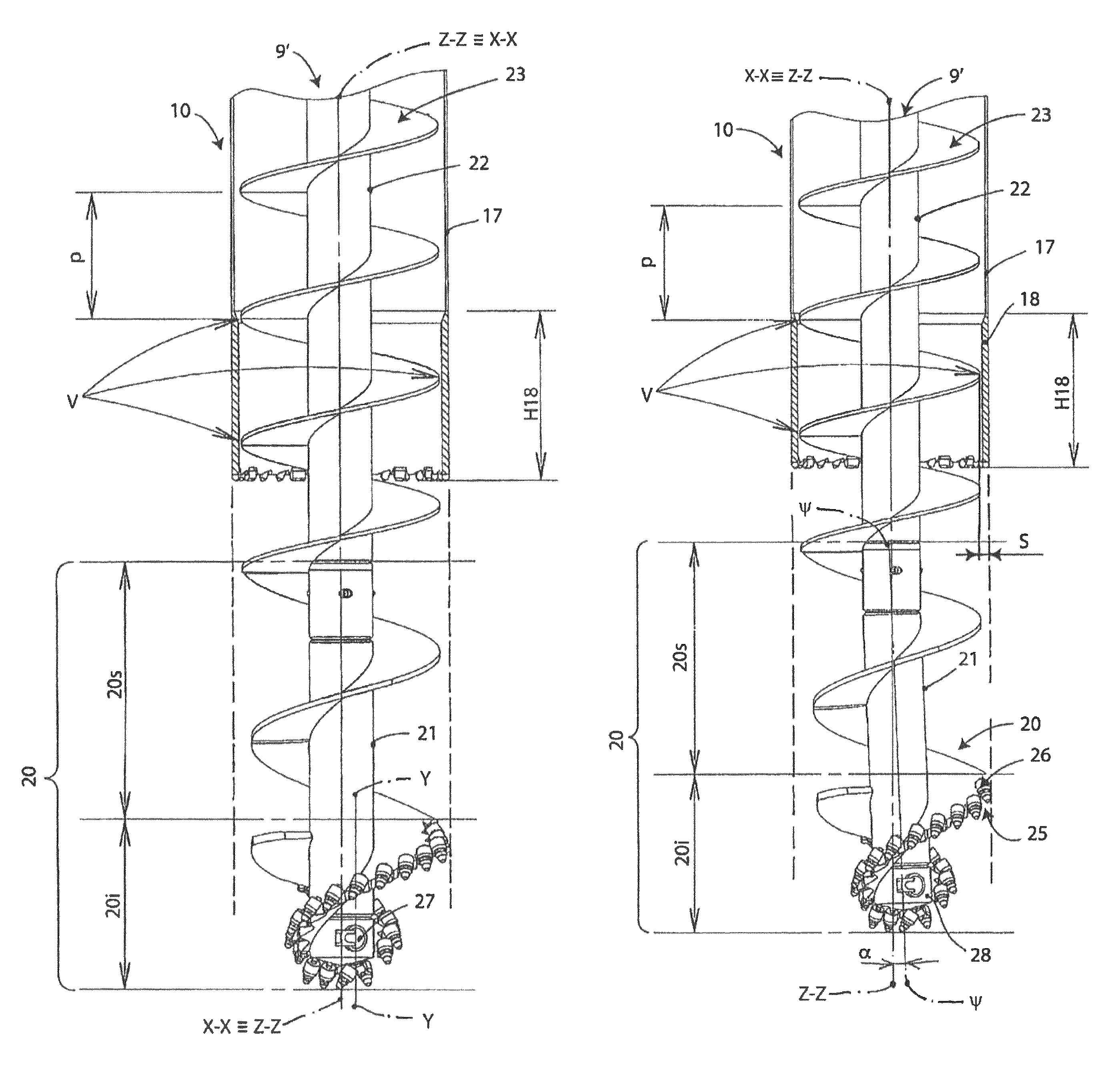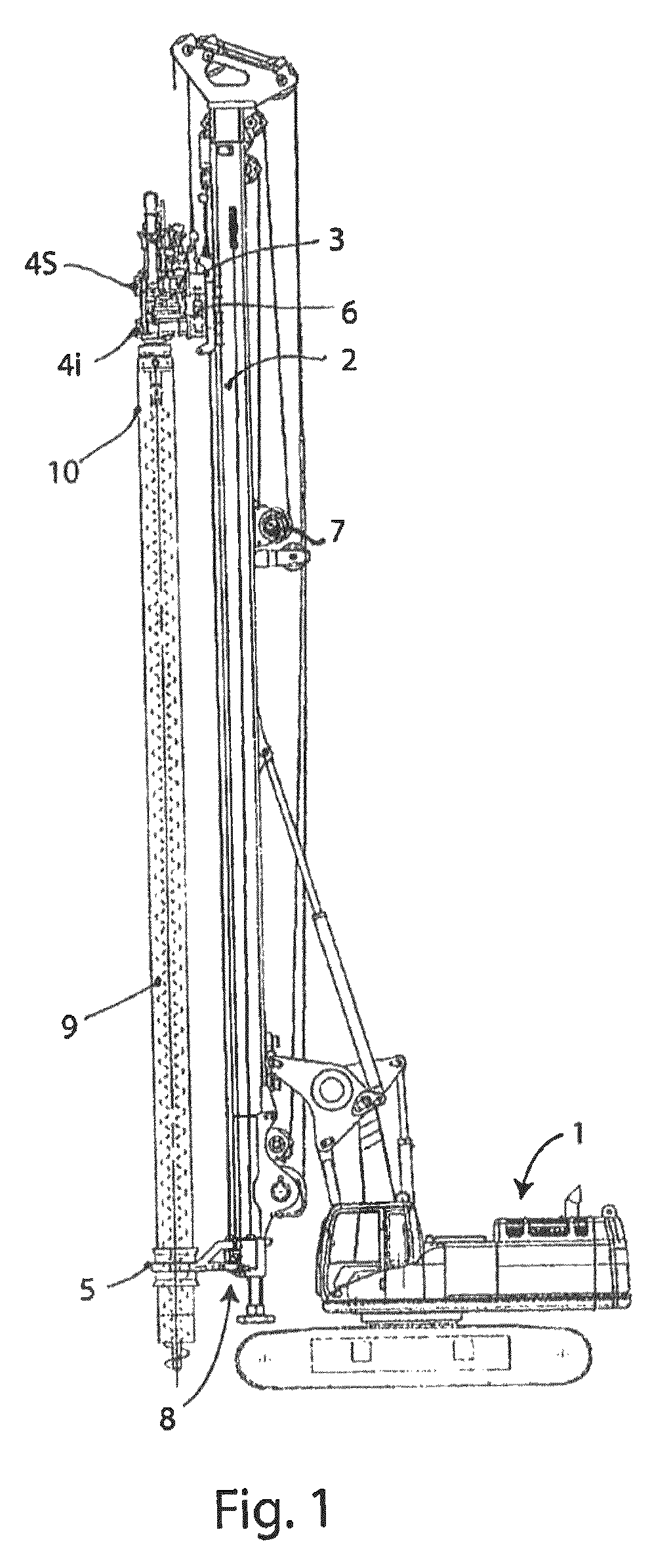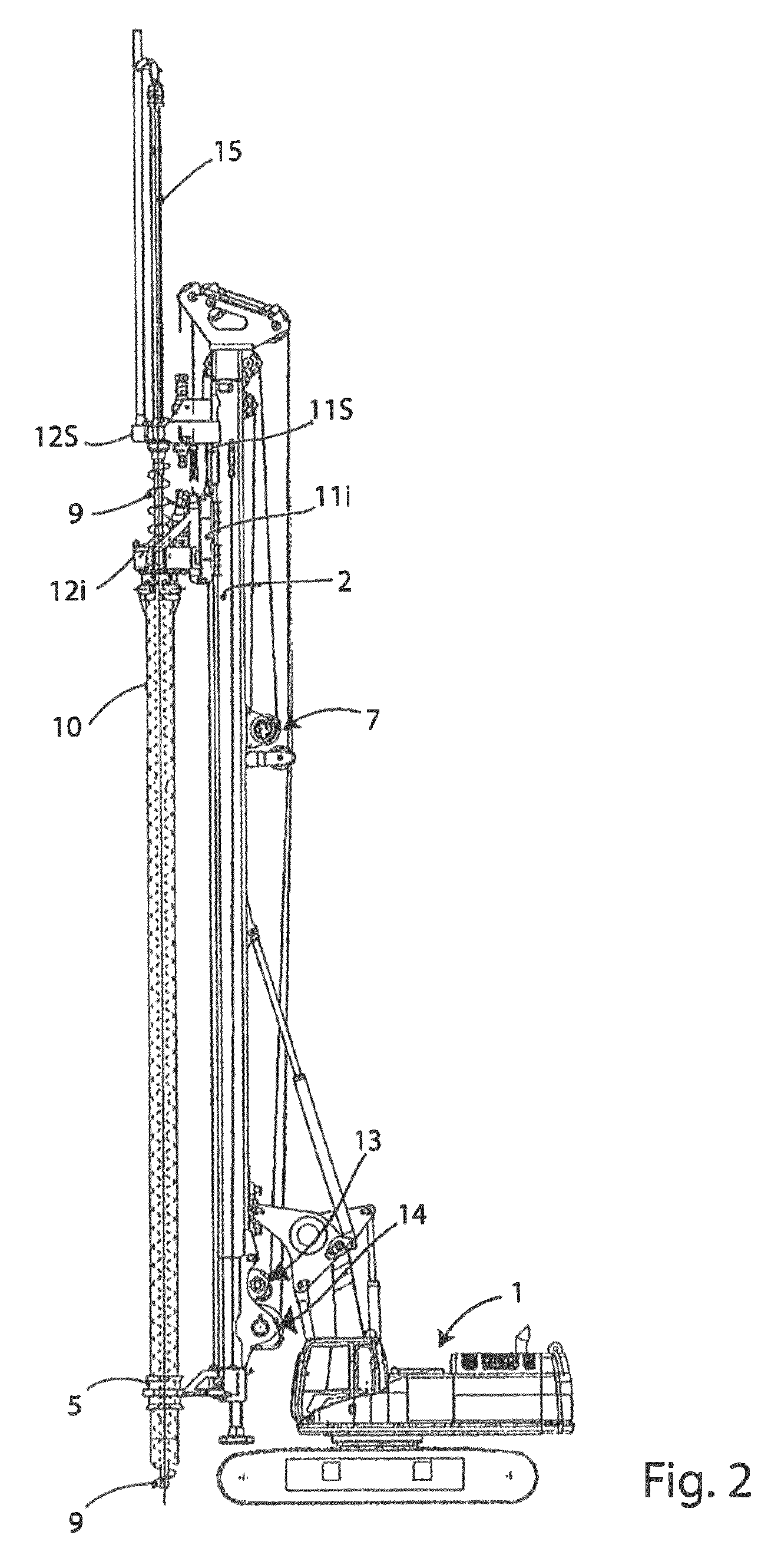Helical drill bit for an auger of a ground excavation assembly, in particular for building excavated piles, and drilling method that uses such a bit
a technology of ground excavation and drill bit, which is applied in the direction of drilling pipes, drilling with mechanical conveying, caissons, etc., can solve the problems of reducing the effectiveness of drilling, and avoiding the possibility of leaving the casing pip
- Summary
- Abstract
- Description
- Claims
- Application Information
AI Technical Summary
Benefits of technology
Problems solved by technology
Method used
Image
Examples
Embodiment Construction
[0070]With reference to FIG. 5, an example of drilling equipment including a drilling tool equipped with an example embodiment of a bit according to the present invention is illustrated. Such a tool is wholly indicated with 9′ to distinguish it from the drilling tools illustrated in combination with the equipment of the previous figures and made according to the prior art.
[0071]Details and elements that are similar—or having an analogous function—to those of the example of equipment made according to the prior art and illustrated in FIGS. 2 to 4, have the same alphanumeric references associated with them. In order to be brief, the description of such details and elements will not be repeated again hereafter, but we refer to what has been quoted earlier in the presentation of the technological background relative to the present invention.
[0072]As a whole, the drilling tool or auger 9′ defines a helical or Archimedean screw-type structure extending cylindrically around a longitudinal ...
PUM
 Login to View More
Login to View More Abstract
Description
Claims
Application Information
 Login to View More
Login to View More - R&D
- Intellectual Property
- Life Sciences
- Materials
- Tech Scout
- Unparalleled Data Quality
- Higher Quality Content
- 60% Fewer Hallucinations
Browse by: Latest US Patents, China's latest patents, Technical Efficacy Thesaurus, Application Domain, Technology Topic, Popular Technical Reports.
© 2025 PatSnap. All rights reserved.Legal|Privacy policy|Modern Slavery Act Transparency Statement|Sitemap|About US| Contact US: help@patsnap.com



